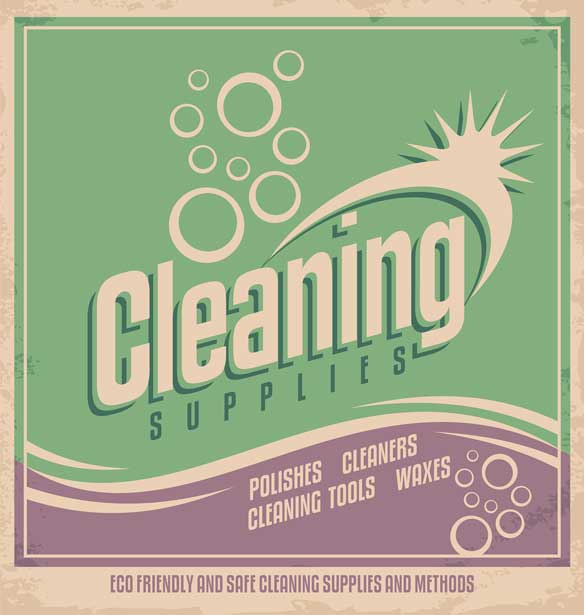With flu season fast approaching, balancing the desire to engage in environmentally friendly cleaning with the need to thoroughly disinfect surfaces is at the forefront of every green cleaner’s mind. While there are a number of options to choose from, the default place to start when seeking an eco-friendly germ-free clean is plain white vinegar. White vinegar is used by many commercial cleaning companies such as Choice Cleaning, and is highly recommended by the experts.
While vinegar is relatively harmless to the natural environment (and human health), its high acidity level makes it very effective when it comes to killing mould, bacteria, and germs. Regular distilled vinegar (the kind found in most supermarkets), which is only about five per cent concentration, is sufficient to kill approximately 80 per cent of common household germs. If this is not satisfactory due to personal preference or the presence of individuals in your household who suffer from conditions which suppress the immune system, look for a stronger form of vinegar rather than eschewing environmentally friendly cleaning in favour of harsh chemicals. Pickling vinegar, which has about seven per cent acidity, will take care of up to 90 per cent of common household germs. (Pickling vinegar can be harder to find, so if you prefer it, it’s best to buy a few bottles at a time and stock up.)
Likewise, when working with hard surfaces you can pair vinegar with hydrogen peroxide for an even more thorough clean, and/or to take care of those few strains of bacteria which vinegar does not eliminate (e.g. Pseudomonas, which is usually harmless but can be notoriously problematic for those with cystic fibrosis).
Hydrogen peroxide is also safe for the environment and relatively harmless to humans when not consumed directly, as it is simply water with an extra oxygen molecule (H2O2). This means that, unlike chlorine bleach, it breaks down into oxygen and water rather than emitting harmful vapours. Hydrogen peroxide, can, however, be quite caustic, so for most purposes it should be diluted to a three per cent concentration (the strength at which it is usually sold).

When using white vinegar and hydrogen peroxide to clean, one must be sure to use each solution in succession, rather than mixing the two ingredients, as mixing them actually dilutes the germ-killing power of each.
To begin, wash hard surfaces with vinegar, then immediately spray those same surfaces with a mist of three per cent hydrogen peroxide solution. Do not wipe up either the vinegar or peroxide, but rather let them evaporate on their own.
According to research published in Science News, when utilised correctly, the pairing of vinegar and hydrogen peroxide is 10 times more effective than disinfecting with either substance alone. It’s also been shown that this pairing can actually kill more bacteria than bleach when used in the kitchen, proving that environmentally friendly cleaning need not be viewed as a sacrifice in efficacy for the sake of human and animal health concerns.
Using Vinegar Around the Home
Vinegar can be used in many diverse applications throughout the home, such as:
When cleaning the kitchen:
Prevent the accumulation of harmful bacteria and mould in damp porous cleaning tools by soaking items such as sponges and dish rags overnight in 1/4 of a cup white distilled vinegar (combined with enough water to cover them) before throwing them in the wash.
Remove soap scum and odours from your dishwasher by running the machine (while empty) with one cup of white distilled vinegar added.
Make it easier to clean stubborn caked-on grime out of your microwave and help to eliminate smells by microwaving a solution of vinegar and water for about three minutes (or until it is at a visible boil). Wipe out the microwave with a damp cloth soon afterwards.
When cleaning the bathroom:
Use a solution of one part salt to four parts white distilled vinegar to create an abrasive cleaner that effectively removes built-up soap scum.
Get rid of stubborn toilet odours and leave your toilet gleaming clean by soaking the basin for half an hour in about three cups of white vinegar. Scrub and flush soon after.
When cleaning the living room:
Wipe down windows with equal parts vinegar and water. If you notice any remaining streaks (often caused by the residue of past chemical cleaner use), dab on some undiluted vinegar to take care of them.
Try a spot test on your carpet with a solution of one part vinegar to four parts water—some carpets respond very well to this solution and will look (and smell) noticeably fresher after being brushed down with it.
When doing the laundry:
You can reduce your use of chemical-laden dryer sheets by adding half a cup of vinegar to your laundry during its “rinse” cycle. This will help to preserve the colour of your clothes as well.
To safely “bleach” whites, boil them briefly in a pot of water with a cup of vinegar added to it before soaking them overnight in this solution. Wash normally the next day.
As a final note, you can also safely disinfect children’s toys by wiping them down with white vinegar—an excellent choice particularly if you have young children, who often put toys in their mouths.
